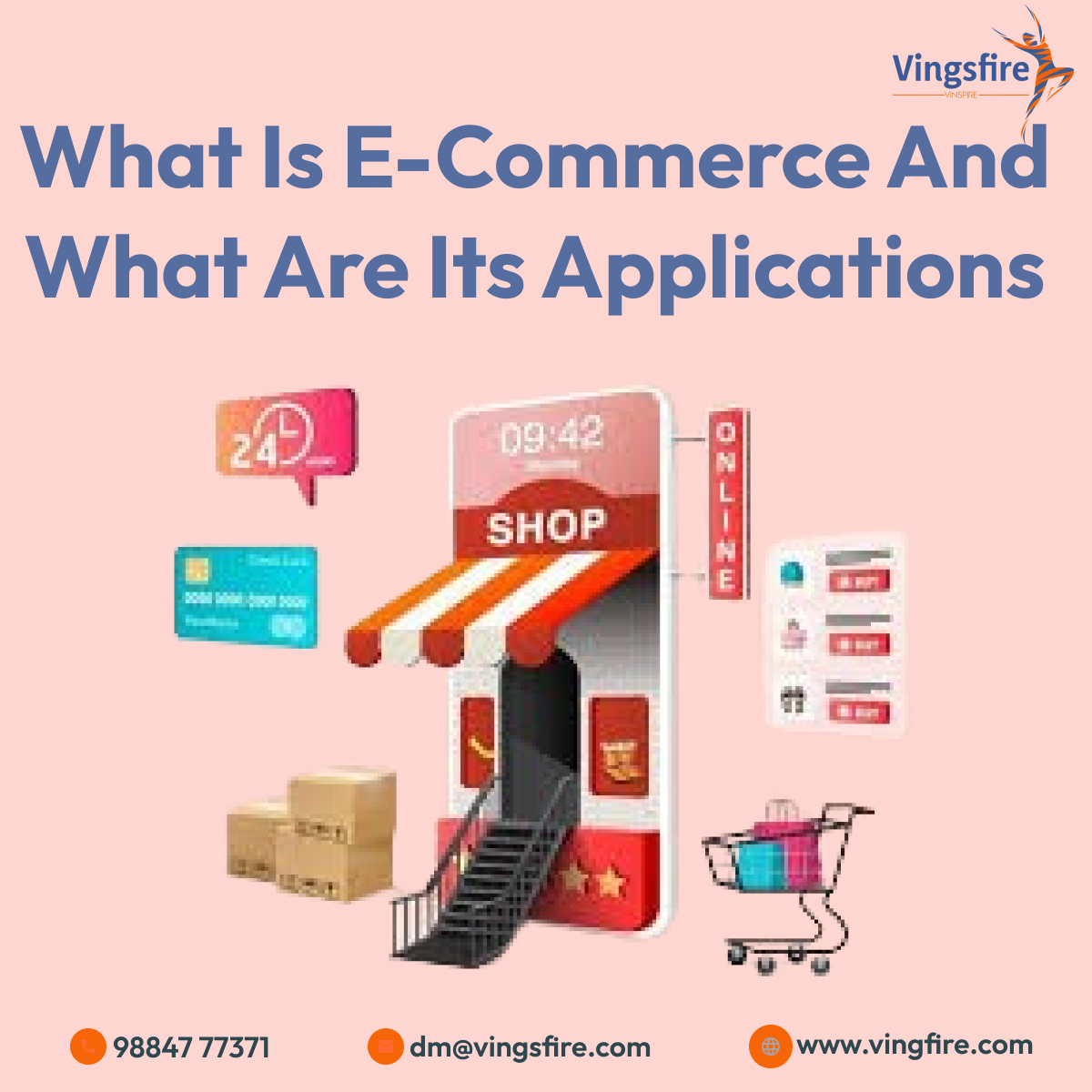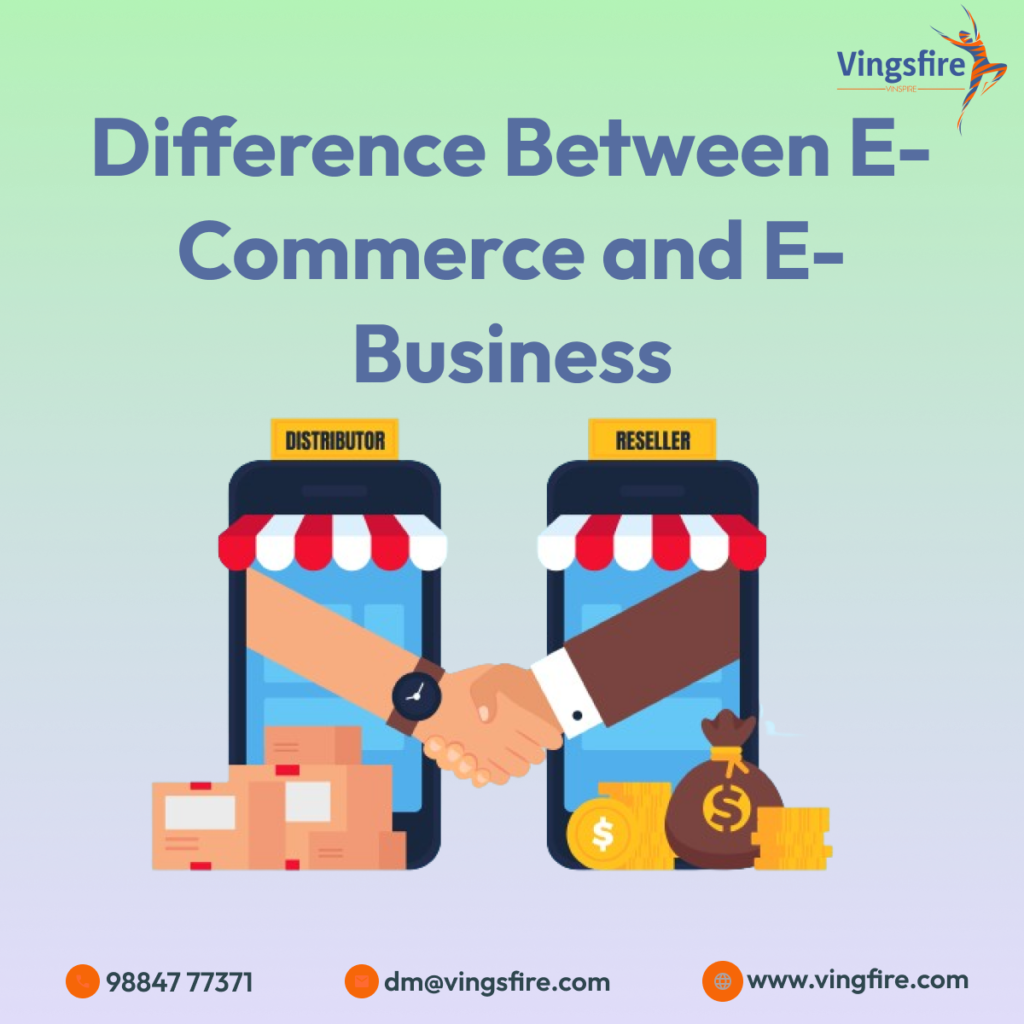Introduction:
In the rapidly evolving landscape of the digital era, E-commerce has emerged as a transformative force, reshaping the way businesses operate and consumers shop. This article delves into the essence of E-commerce, unraveling its definition and exploring its multifaceted applications that have revolutionized the global marketplace & explain ecommerce.
Learn More About Vingsfire:-
1.LINKEDIN
2.FACEBOOK
Understanding E-commerce:
E-commerce, short for electronic commerce, refers to the buying and selling of goods and services over the internet. It eliminates the need for physical presence, allowing transactions to occur in the virtual realm. This digital marketplace has become an integral part of the modern economy, facilitating seamless interactions between businesses and consumers worldwide & explain ecommerce.
Key Components of E-commerce:
Online Retail:
At the core of E-commerce is online retail, where businesses showcase and sell their products to consumers through digital platforms. This includes websites, mobile apps, and online marketplaces. Popular examples include Amazon, eBay, and Shopify.
Electronic Payments:
E-commerce relies on electronic payment methods to facilitate transactions. This includes credit/debit cards, digital wallets, and other online payment systems, ensuring secure and convenient financial transactions.
Digital Marketing:
To thrive in the digital marketplace, businesses leverage digital marketing strategies such as SEO (Search Engine Optimization), social media marketing, and email marketing. This enhances their online visibility and attracts potential customers.
Applications of E-commerce:
Online Shopping:
The most prevalent application of E-commerce is online shopping. Consumers can explore a vast array of products, compare prices, and make purchases without leaving the comfort of their homes. This convenience has led to the exponential growth of online retail.
Electronic Banking:
E-commerce has revolutionized the banking sector, enabling customers to perform various financial transactions online. This includes checking account balances, transferring funds, and paying bills through secure online portals.
Digital Content and Streaming Services:
The entertainment industry has embraced E-commerce through digital content distribution. Streaming services like Netflix and Spotify allow users to access a vast library of movies, music, and other digital content, making it a lucrative E-commerce niche.
E-learning Platforms:
The education sector has witnessed a significant transformation with the advent of E-commerce. Online learning platforms offer courses, webinars, and educational resources, providing learners with the flexibility to acquire new skills and knowledge at their own pace & explain ecommerce.
Travel and Hospitality:
Booking flights, hotels, and other travel-related services have become seamless with E-commerce. Platforms like Expedia and Airbnb simplify the travel planning process, offering users the ability to make reservations and payments online & explain ecommerce.
B2B E-commerce:
E-commerce extends beyond B2C (business-to-consumer) transactions to include B2B interactions. Businesses engage in online procurement, supply chain management, and collaboration through specialized E-commerce platforms designed for the business-to-business ecosystem.
Conclusion:
E-commerce is a dynamic and ever-evolving domain that has reshaped the way we conduct business and engage in commerce. From online shopping to digital banking and beyond, its applications are vast and diverse. As technology continues to advance, E-commerce is poised to further revolutionize the global marketplace, offering new opportunities and challenges for businesses and consumers alike. Embracing the digital future, E-commerce remains a driving force in shaping the landscape of modern commerce & explain ecommerce.













